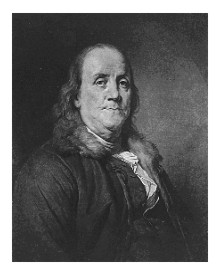Sponsor this page for $100 per year. Your banner or text ad can fill the space above.
Click here to Sponsor the page and how to reserve your ad.
-
Timeline
1787 Detail
January 25, 1787 - In Massachusetts, six hundred debt-ridden farmers, led by Daniel Shays, revolt against their creditors and high Massachusetts taxes. Faced with imprisonment and the loss of their farms for not paying their debts, they engage in Shays' Rebellion, but it fails when state militia intervene. Daniel Shays would escape to Vermont with the death penalty on his head, but later would be pardoned for his actions.

"I have been greatly abused, have been obliged to do more than my part in the war, been loaded with class rates, town rates, province rates, Continental rates, and all rates ... been pulled and hauled by sheriffs, constables, and collectors, and had my cattle sold for less than they were worth ... The great men are going to get all we have and I think it is time for us to rise and put a stop to it, and have no more courts, nor sheriffs, nor collectors nor lawyers," Farmer Plough Jogger.
Shays had been a Captain who had seen service at Lexington, Concord, Bunker Hill, Saratoga, and the Battle of Stoney Point. He served under the command of General Anthony Wayne and the Marquis de Lafayette. He resigned after being wounded and had never been paid for his service. Now he saw how affected his fellow neighbors were as one by one they were kicked out of their farms. In August 1786, one thousand of those farmers, including Shays, marched to Northhampton. The Massachusetts government had refused to consider a bill to provide debt relief. Upon their arrival, they prevented the court to hold foreclosure procedures. In September 1786, they marched into Springfield and prevented the same thing.
The federal government and the state of Massachusetts, including Governor Bowdoin, were concerned. Former Continental Army General Benjamin Lincoln raised money to man a three thousand member militia to combat the Shays militants whose number had now risen to one thousand five hundred, with some putting the number closer to four thousand.

The Shays Rebellion Comes to a Head
On January 25, 1787, prior to Lincoln's full force getting organized for a full scale attack, Shays farmers, the amount of which is debated between 1,500 and 4,000, marched to Springfield again, but this time to the armory to confiscate enough weapons to overthrow the entire state government. They approached the armory, defended by twelve hundred soldiers of the state militia. Commanding General William Shephard ordered them to halt, firing warning shots that did not cause a stop to the rebels charge. Cannon shots were ordered; four of Shays men were killed and twenty wounded.
They retreated into the hillsides after that firepower, now pursued by General Lincoln's men, who had arrived. On February 4, General Benjamin Lincoln devised a surprise night attack during a snowstorm near Petersham. Shays men were not ready and scattered into the woods. Some were captured. Many, including Shays, fled to New Hampshire or Vermont. The rebellion had been stopped outside a few small skirmishes. Daniel Shays, in 1788, was pardoned and returned to Massachusetts.
Shays, Farmers, and Politics After Rebellion
Those captured faced two choices; one to state that they had participated in the rebellion, and thus would be pardoned. Four thousand men took that deal. Several hundred were indicted on charges associated with the rebellion; most were pardoned, eighteen were not. They were sentenced to death.
Despite its quick repulse, it had become evident to Federal officials in New York and the Massachusetts State government, that there should be an easing of the burdens through taxation and the punishment of debtors. Some think Shays Rebellion was an impetus for the Constitutional Convention. While these macro ideas were floating around the political spectrum, state politics were causing micro abrasions. Governor Bowdoin was blamed for much of the harang and lost his next election to founding father John Hancock.
Of course, some national politicians did not think that the rebellion was a big thing, as Thomas Jefferson is quoted as stating in a letter to James Madison. "I hold it that a little rebellion, now and then, is a good thing, and as necessary in the political world as storms in the physical. Unsuccessful rebellions, indeed, generally establish the encroachments on the rights of the people, which have produced them. An observation of this truth should render honest republican governors so mild in their punishment of rebellions, as not to discourage them too much. It is a medicine necessary for the sound health of government."
But that little rebellion did no good for Daniel Shays who started it. After living in Massachusetts for awhile, Daniel Shays moved to Conesus, New York, living in poverty until his death.
Photo above: Engraving of members of Shays Rebellion fleeing Federal troops, 1902, C. Kendrick. Courtesy The people's history of the world, Edward Sylvester Ellis; vol. VI via Wikipedia Commons. Below: Political cartoons about politics in 1787, including Shays Rebellion, 1787, James Doolittle. Courtesy Library of Congress. Sources: Library of Congress; American Battlefield Trust; Britannica.com; thoughtco.com; thisdayinquotes.com; Wikipedia Commons.

History Photo Bomb
Despite its quick repulse, it had become evident to Federal officials in New York and the Massachusetts State government, that there should be an easing of the burdens through taxation and the punishment of debtors. Some think Shays Rebellion was an impetus for the Constitutional Convention. While these macro ideas were floating around the political spectrum, state politics were causing micro abrasions. Governor Bowdoin was blamed for much of the harang and lost his next election to founding father John Hancock.
Of course, some national politicians did not think that the rebellion was a big thing, as Thomas Jefferson is quoted as stating in a letter to James Madison. "I hold it that a little rebellion, now and then, is a good thing, and as necessary in the political world as storms in the physical. Unsuccessful rebellions, indeed, generally establish the encroachments on the rights of the people, which have produced them. An observation of this truth should render honest republican governors so mild in their punishment of rebellions, as not to discourage them too much. It is a medicine necessary for the sound health of government."
But that little rebellion did no good for Daniel Shays who started it. After living in Massachusetts for awhile, Daniel Shays moved to Conesus, New York, living in poverty until his death.
Photo above: Engraving of members of Shays Rebellion fleeing Federal troops, 1902, C. Kendrick. Courtesy The people's history of the world, Edward Sylvester Ellis; vol. VI via Wikipedia Commons. Below: Political cartoons about politics in 1787, including Shays Rebellion, 1787, James Doolittle. Courtesy Library of Congress. Sources: Library of Congress; American Battlefield Trust; Britannica.com; thoughtco.com; thisdayinquotes.com; Wikipedia Commons.







